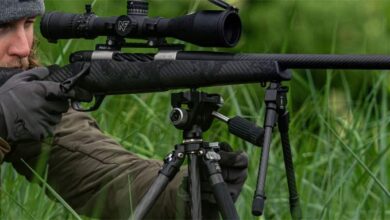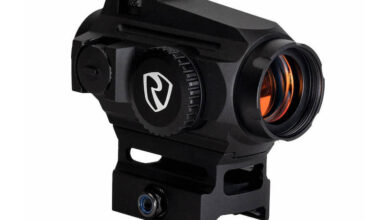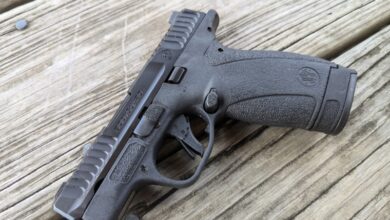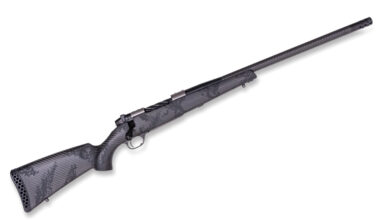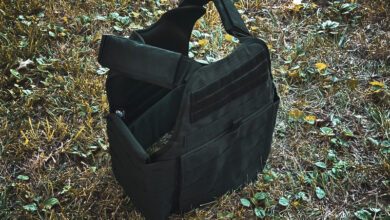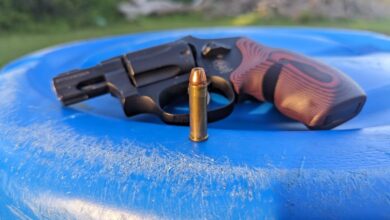Federal Judge Overturns Forced Reset Trigger Ban

You may recall the uproar over forced reset triggers (FRT) a few years back, particularly the Rare Breed Trigger. In case you don’t, Rare Breed’s FRT-15 Trigger uses an AR-15’s cycling bolt carrier to reset itself after the shooter presses it. A properly trained shooter and a properly tuned rifle can closely simulate fully automatic fire, though the trigger itself functions as a semi-auto trigger. The FRT-15 proved so popular that Rare Breed could hardly keep them in stock.
But the Bureau of Alcohol, Tobacco, Firearms, and Explosives (ATF) unilaterally classified the FRT-15 as a “machinegun.” ATF then sued Rare Breed and went after its customers. You can read about that here if you’re interested.
But Rare Breed challenged the ATF’s classification under the Administrative Procedures Act (APA), saying that the agency acted beyond its authority and circumvented Congress. A Federal District Judge has now ruled in Rare Breed’s favor, citing not only the APA, but also the recently decided Cargill v. Garland Supreme Court decision that overturned the bump stock ban.
How the FRT-15 Functions
The term “forced reset” accurately describes how the trigger works. A standard AR trigger resets when the shooter releases rearward pressure, thus allowing the trigger mechanism to move forward. Another press of the trigger starts the whole process over. Most of you know that, of course. But the FRT-15 uses a newly designed hammer that forces the trigger forward to the reset, along with the shooter’s finger, as the bolt carrier moves forward to chamber the next round.
A locking bar prevents the shooter from pressing the trigger again until the bolt cycle is complete. The shooter can take advantage of the hammer-assisted reset to dramatically increase the rate of fire. Or not. With practice, the shooter can manipulate the trigger to fire only one shot or the equivalent of a short burst.
Keep in mind that the locking bar’s pressure on the trigger prevents another press until the bolt cycles. The locking bar is only released as the bolt cycle is completed. The shooter cannot simply hold the trigger to the rear, or the rifle will malfunction. The trigger must execute its function for each round fired. So, while the FRT-15 is capable of a prodigious rate of fire, it is still a semi-automatic trigger.
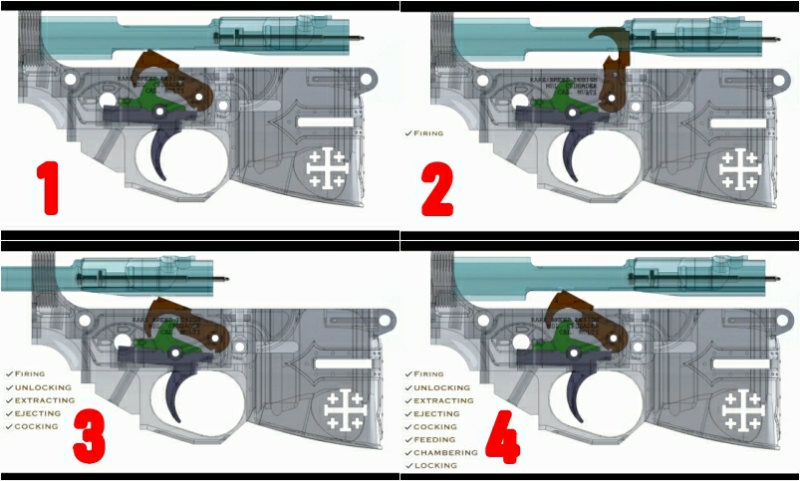
But the ATF rule subtly changed the National Firearms Act’s (NFA) language to classify the FRT-15 as a “machinegun.” Many of you probably know that the NFA calls any firearm that fires more than one projectile on “a single function of the trigger” as a “machinegun.” ATF’s rule changed that requirement to “a single constant rearward pull of the trigger.” Subtle but significant. That change provided partial grounds for overturning the rule.
The Court’s Decision
Federal District Judge Reed O’Connor took the time to learn how the FRT-15 works and explained it in his decision. We’ll skip that since we’ve already covered it. We’ll simply note that Judge O’Connor wrote that “FRT’s do not fire multiple rounds with a single function of the trigger and, thus, do not qualify as machineguns.”
But the judge went further. Noting the ATF’s language change, he wrote that “Defendants (ATF) transform the required statutory focus away from the objective trigger mechanics to the subjective actions of the gun user instead. This is incorrect and is the same rewriting of the statute Defendants already attempted – and failed – to do with bump stocks. For purposes of statutory interpretation, it matters not what human input is required to activate the trigger. All that matters is whether more than one shot is fired each time the trigger functions (emphasis added). As Cargill explained, courts cannot look to the shooter’s actions in deciding whether FRTs are machineguns. Indeed, the ‘notion that the definition turns on the actions of an unnamed shooter is inconsistent with both the [definition’s] grammatical and statutory contexts.’”
Judge O’Connor vacated the ATF’s rule classifying FRTs as “machineguns,” meaning it’s like the rule never existed at all. But the decision also orders the ATF to take certain actions. Other aspects of the decision also merit brief discussion.

Court Orders
Judge O’Connor issued the following orders to the ATF:
- The Court VACATES defendants’ unlawful classification of FRTs as “machineguns.”
- The Court DECLARES unlawful Defendants’ determination that FRTs are “machineguns.”
- The Court ENJOINS Defendants – along with their respective officers, agents, servants, and employees – from implementing or enforcing against the parties in this lawsuit, in any civil or criminal manner described below, the ATF’s expanded definition of “machinegun” to FRTs that this Court has determined is unlawful:
- Initiating or pursuing criminal prosecutions for possession of FRTs;
- Initiating or pursuing civil proceedings for possessing, selling, or manufacturing FRTs based on the claim that FRTs are machineguns;
- Initiating or pursuing criminal prosecutions for representing to the public of potential buyers and sellers that FRTs are not machineguns;
- Initiating or pursuing civil actions for representing to the public of potential buyers and sellers that FRTs are not machineguns;
- Sending “Notice Letters” or other similar communications stating that FRTs are machineguns;
- Seizing or requesting “voluntarily” (sic) surrender of FRTs to the government based on the claim that FRTs are machineguns;
- Destroying any previously surrendered or seized FRTs; and
- Otherwise interfering in the possession, sale, manufacture, transfer, or exchange of FRTs based on the claim that FRTs are machineguns.
- This scope of this injunction covers the Individual Plaintiffs and their families, the Organizational Plaintiffs and their members, and the downstream customers of any commercial member of an Organizational Plaintiff to the extent that it does not interfere with other courts, such as the E.D.N.Y. jurisdiction over the Rare Breed Parties (this is an ongoing case in the Eastern District of New York) and other pending criminal cases against individuals already subject to prosecution.
- The Court further ENJOINS Defendants from pursuing criminal proceedings or criminal enforcement actions against the Rare Breed Parties on the grounds that FRTs are “machineguns.”
- The Court ORDERS Defendants to return to all parties, including manufacturers, distributors, resellers, and individuals, all FRTs and FRT components confiscated or seized pursuant to their unlawful classification within thirty (30) days of this decision.
- The Court ORDERS Defendants to mail remedial notices correcting their prior mailing campaign that “warned” suspected FRT owners that possession of FRTs and FRT components was purportedly illegal.
The ATF Overstepped
The ATF overstepping its authority has become a familiar theme of late. Rules addressing bump stocks, frames and receivers, pistol braces, and FRTs all represent that trend. The problem is that the ATF, as an executive agency, does not have the power to enact federal law. Yet those rules carry thousands of dollars in fines and years of prison time as consequences should a citizen run afoul of them. So, they essentially carry the weight of federal law.

The Constitution clearly states that only Congress can enact federal statutes, especially those that carry substantial penalties, as all those rules do or did. Judge O’Connor addresses this in his conclusion, noting that executive agencies making such rules represents “rampant evasion of the democratic process.” Only the people’s elected representatives, “not life-tenured judges and unelected bureaucrats” may initiate and enact statutory change (emphasis in original).
“Rather than respect this intentional feature of our democratic system,” the judge wrote, “Defendants chose to advance an (sic) policy agenda wholly divorced from the NFA’s statutory text. Thus, to allow Defendants’ unlawful action to stand would be to functionally rewrite the NFA. That is not how our democratic system functions.”
What Now?
ATF always appeals decisions that go against them. The last few years have proven that. But this case cited the already settled Cargill Decision as a major part of its reasoning. Might the ATF admit defeat since the Supreme Court has already ruled on a similar case? This could get interesting.
The post Federal Judge Overturns Forced Reset Trigger Ban appeared first on The Mag Life.
Read the full article here

